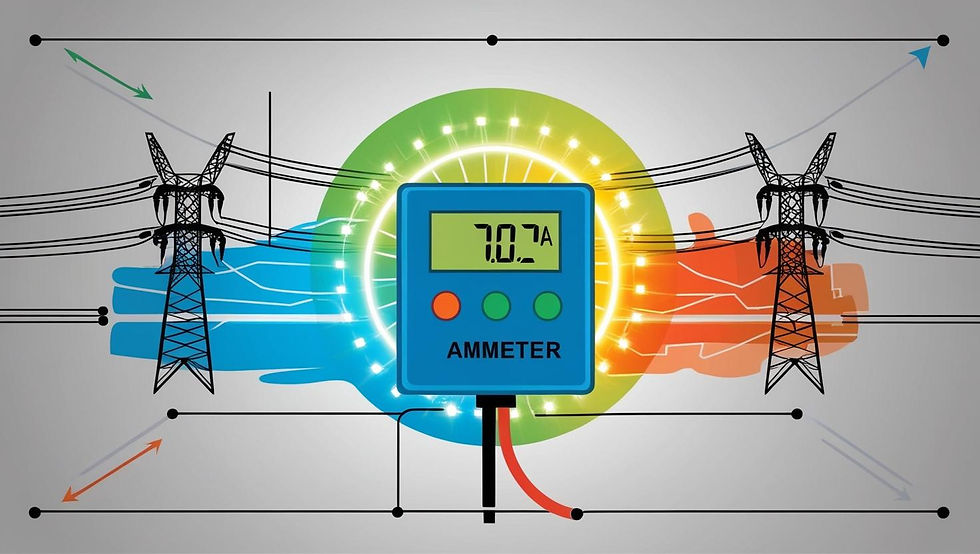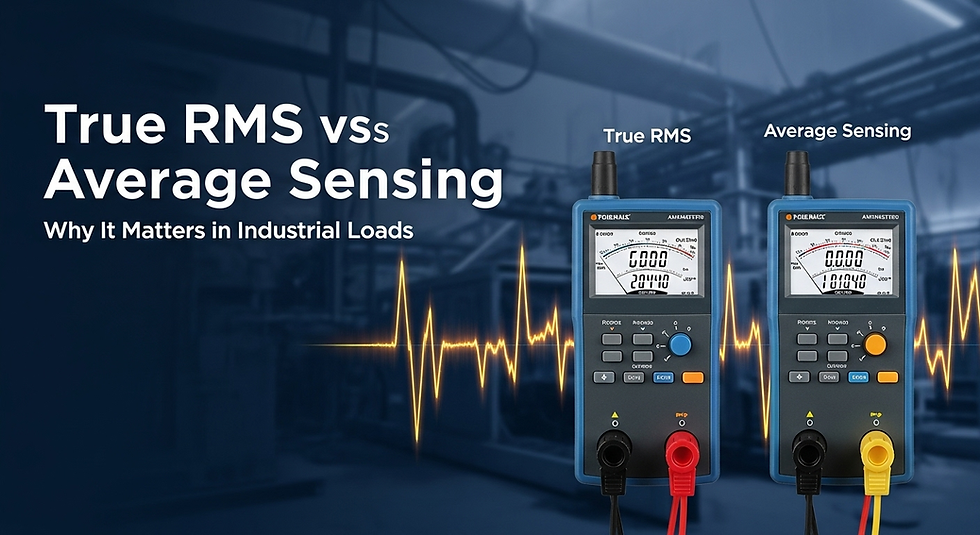Can a Digital Ammeter Improve Energy Efficiency?
- teddymccb
- Apr 21
- 4 min read

When I first heard about digital ammeter, I honestly thought they were just another gadget for electricians. But once I started digging into what they do—especially in terms of saving energy—I realized they can be a real game changer for both homes and industries. So, in this blog, I’ll walk you through how digital ammeters work, why they matter, and how they might help improve your energy efficiency.
What is a Digital Ammeter and How Does It Work?
A digital ammeter is a tool that measures electric current in a circuit. Unlike analog versions, it shows readings on a digital screen, which makes it easier to read and more accurate.
Measures current flow in amperes
Displays real-time readings on a digital screen
Works with sensors or shunts to monitor usage
It’s simple, but powerful. You plug it into the circuit or use it with a current transformer, and it shows you how much current is flowing. If your appliances or machines are using more energy than expected, a digital ammeter will let you know.
Why Monitoring Current Matters for Energy Efficiency
If you're trying to cut down on electricity bills, knowing where and how you're using power is the first step. Digital ammeters help by:
Identifying overloaded circuits
Helping you spot inefficient equipment
Allowing you to track trends over time
This kind of insight lets you make smart decisions—like shutting off machines that draw too much current or replacing older equipment with more efficient ones.
Benefits of Using Digital Ammeters in Residential and Commercial Settings
You don’t have to be an industrial plant to benefit from one. I’ve seen people use digital ammeters in their homes to cut energy waste and also in factories to optimize their processes.
For homes:
Detect phantom loads (devices using power even when off)
Prevent overloads in DIY solar systems
For businesses:
Monitor multiple machines in real-time
Schedule maintenance before breakdowns
Reduce downtime and save on energy costs
Smart Features in Modern Digital Ammeters
Today’s digital ammeters come with smart features that make energy monitoring even easier. Some of the most useful ones include:
Wireless data transmission
Integration with smart meters
Multi-channel monitoring
Custom alerts for abnormal loads
These features make it easier to access and act on your energy data—sometimes right from your smartphone.
How to Choose the Right Digital Ammeter
Not every ammeter will suit your needs. Here’s what I consider when helping someone choose the right one:
Range of current (What’s the max amperage you need?)
Display type (Backlit screens are a plus)
Accuracy rating (Higher is better)
Input type (Shunt or clamp-based?)
Additional features (Bluetooth, data logging, etc.)
If you're managing a large system or multiple circuits, getting an ammeter with remote access can save you a lot of hassle.
Cost vs. Savings: Is It Worth It?
You might wonder if buying a digital ammeter is worth the investment. From my experience, the answer is yes—especially for commercial setups.
Low upfront cost (starting around $30–$100)
Potential to save hundreds annually by identifying inefficiencies
Extends equipment lifespan by avoiding overloads
The return on investment often happens within a few months if used actively.
Real-World Applications That Improve Efficiency
Here are some real examples where digital ammeters made a noticeable impact:
Manufacturing facilities reduced energy waste by tracking machines that ran idle overnight
Off-grid homes optimized their solar inverter loads
Retail shops spotted faulty AC units drawing excess power
These aren’t edge cases—they’re common, especially when you're trying to lower monthly costs.
Digital Ammeter vs. Analog Meter: What’s the Difference?
Let’s quickly break down the major differences:
Feature | Digital Ammeter | Analog Meter |
Display | Clear digital screen | Needle-based dial |
Accuracy | High | Medium |
Response time | Fast | Slower |
Data Logging | Often available | Not available |
Price | Slightly higher | Cheaper |
I always recommend going digital, especially if you're serious about monitoring usage precisely.
Where to Get the Best Value
If you're looking for durable and accurate tools, try buying from a reliable digital ammeter manufacturer. You’ll often get better customer support, customization options, and longer warranties.
Manufacturers usually provide better specs and data sheets that help with setup, especially in industrial use cases.
What About Integration With Other Tools?
Digital ammeters don’t have to work alone. In fact, when combined with energy analyzers, power meters, or automation systems, they give you a more complete picture of your energy consumption.
One example? Some workshops pair digital ammeters with monitoring setups for motors and tools—like a keyless drill chuck distributor who needs to monitor power surges in electric drills. This pairing helps prevent damage and cuts down on unnecessary repair costs.
Can Digital Ammeters Help With Solar Energy Monitoring?
Absolutely. If you have solar panels installed, tracking how much energy you're generating and using is crucial.
Track inverter performance
Compare energy input/output
Maximize solar ROI
A digital ammeter helps make sure you're getting the most out of your solar setup.
Final Thoughts: Are Digital Ammeters Worth the Hype?
From what I’ve seen, yes. If you want to cut energy waste, protect your equipment, or just get smarter about your power usage, a digital ammeter is one of the simplest tools to start with.
It doesn’t take a lot of money or effort to set one up, but the insights you get in return can help you run a more efficient, cost-effective setup—whether at home or at work.
FAQs
Q: Do I need a digital ammeter if I already have a smart meter?
A: A smart meter tracks total consumption, while a digital ammeter can focus on individual circuits or machines. They work great together.
Q: Is it safe to install a digital ammeter by myself?
A: If you're experienced with electrical setups, sure. But for most people, hiring a licensed electrician is the safer bet.
Q: How often should I check my ammeter readings?
A: It depends on your setup. Weekly checks work for homes, but commercial setups may need real-time monitoring.
Q: Can I use one digital ammeter for multiple appliances?
A: Some models allow this through multiple channels. Otherwise, you’ll need one per monitored circuit.
Let me know if you'd like to turn this into a downloadable guide or add a graphic/table for visual clarity!



Comments